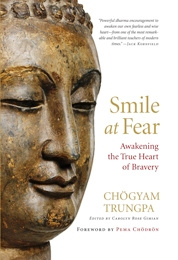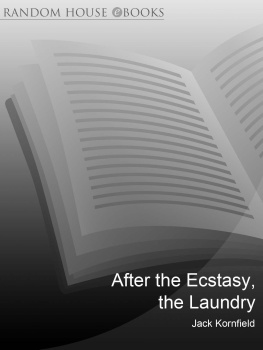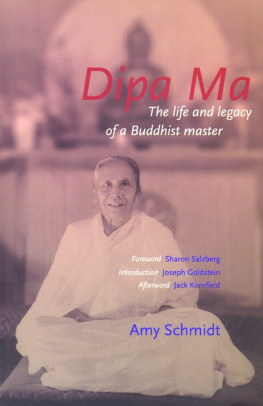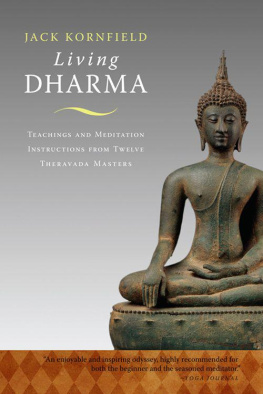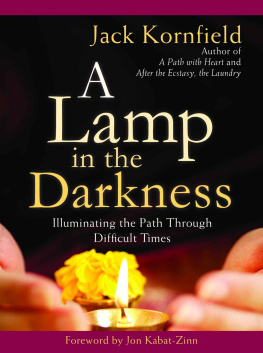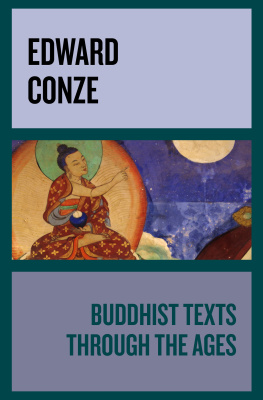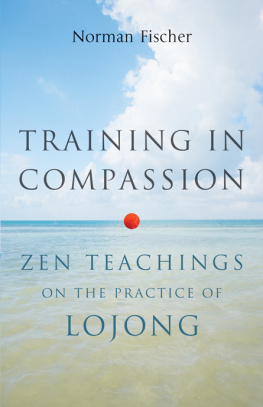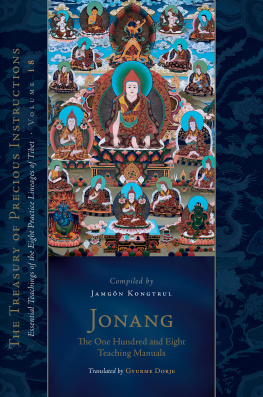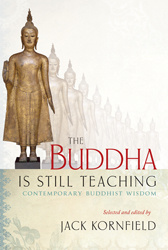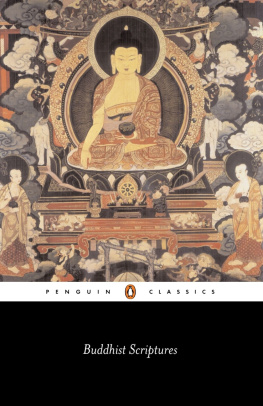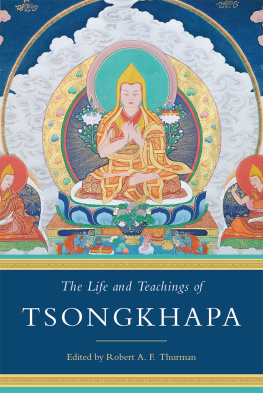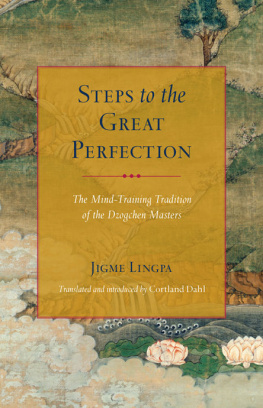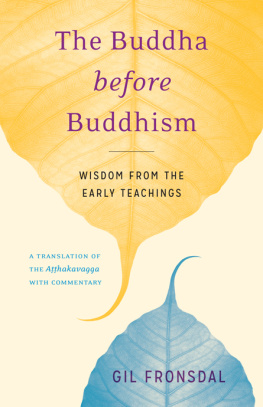A remarkably readable book that records some of the earliest recorded sayings of the historic Buddha.
East and West Series
An inspirational treasury of essential teachings from Buddhist literatureselected by one of the best-known American Buddhist teachers.
Snow Lion
ABOUT THE BOOK
This treasury of essential Buddhist writings draws from the most popular Indian, Tibetan, Chinese, and Japanese sources. Among the selections are some of the earliest recorded sayings of the Buddha on the practice of freedom, passages from later Indian scriptures on the perfection of wisdom, verses from Tibetan masters on the enlightened mind, and songs in praise of meditation by Zen teachers. The book also includes traditional instruction on how to practice sitting meditation, cultivate calm awareness, and live with compassion. Jack Kornfield, one of the most respected American Buddhist teachers, has compiled these teachings to impart the essence and inspiration of Buddhism to readers of all spiritual traditions.
JACK KORNFIELD trained as a Buddhist monk in the monasteries of Thailand, India, and Burma. He is a founding teacher of the Insight Meditation Society in Barre, Massachusetts, and Spirit Rock Meditation Center in Woodacre, California, and has taught meditation internationally since 1974. His books include After the Ecstasy, the Laundry; The Art of Forgiveness, Lovingkindness, and Peace; Meditation for Beginners ; and The Wise Heart.
Sign up to learn more about our books and receive special offers from Shambhala Publications.

Or visit us online to sign up at shambhala.com/eshambhala.
Teachings of the Buddha

EDITED BY
Jack Kornfield
WITH
G IL F RONSDAL

S HAMBHALA
Boston & London
2011
S HAMBHALA P UBLICATIONS , I NC .
Horticultural Hall
300 Massachusetts Avenue
Boston, Massachusetts 02115
www.shambhala.com
1993, 1996 by Jack Kornfield
All rights reserved. No part of this book may be reproduced in any form or by any means, electronic or mechanical, including photocopying, recording, or by any information storage and retrieval system, without permission in writing from the publisher.
The Library of Congress Catalogues the previous edition of this book as follows:
Teachings of the Buddha/Edited by Jack Kornfield with Gil Fronsdal.
Rev. and exp. ed.
p. cm.
eISBN 978-0-8348-2302-0
ISBN 1-57062-124-1 (Shambhala Library Edition)
ISBN 1-59030-149-8 (alk. paper)
1. Gautama BuddhaTeachings. 2. Buddhist literatureTranslations into English. I. Kornfield, Jack, 1945 II. Fronsdal, Gil.
BQ915.T43 1995
95-17227
294.363dc20 CIP
Dedicated to
Mahaghosananda
A. T. Ariyaratne
and
Tenzin Gyatso
who keep the lamp of the Dharma alive
CONTENTS
I T IS SAID that soon after his enlightenment the Buddha passed a man on the road who was struck by the Buddhas extraordinary radiance and peaceful presence. The man stopped and asked, My friend, what are you? Are you a celestial being or a god?
No, said the Buddha.
Well, then, are you some kind of magician or wizard? Again the Buddha answered, No.
Are you a man?
No.
Well, my friend, then what are you? The Buddha replied, I am awake.
The word buddha means one who is awake. It is the experience of awakening to the truth of life that is offered in the Buddhist tradition. For twenty-five hundred years the practices and teachings of Buddhism have offered a systematic way to see clearly and live wisely. They have offered a way to discover liberation within our own bodies and minds, in the midst of this very world.
History records that the Buddha was born as a prince in an ancient kingdom of northern India. Although as a youth he was protected by his father in beautiful palaces, as he grew older the Buddha encountered what we must all face: the inevitable sorrows of life. He saw the loss of all things we hold dear, and the aging, sickness, and death that come to every human being. Seeing this, he chose to renounce his royal title and leave his palace to become a seeker of truth, searching for the end of human sorrow, searching for freedom in the face of the ceaseless round of birth and death.
For some years the Buddha practiced as an austere yogi in the forests of India. In time he realized that his extreme asceticism had brought him no more freedom than his previous indulgence in worldly pleasure. Instead, he saw that human freedom must come from practicing a life of inner and outer balance, and he called this discovery the Middle Path.
Having seen this, the Buddha seated himself under a great banyan tree and vowed to find liberation in the face of the forces that bring suffering to humankind. He felt himself assailed by these forcesby fear, attachment, greed, hatred, delusion, temptation, and doubt. The Buddha sat in the midst of these forces with his heart open and his mind clear until he could see to the depths of human consciousness, until he discovered a place of peace at the center of them all. This was his enlightenment, the discovery of nirvana, the freeing of his heart from entanglement in all the conditions of the world. The realization of truth that he touched that night was so profound that his teachings about it have continued to inspire and enlighten people all over the world to this day. Over the centuries, one and a half billion people, one quarter of the human race, have followed the Buddhas way.
From the Buddhas enlightenment, two great powers were awakened in him: transcendent wisdom and universal compassion. Setting in motion the Wheel of the Dharma, the Buddha wandered first to the Deer Park in Benares and gave instructions to the yogis who had practiced with him in the forest. After this, for forty-five years he brought the teachings of wisdom and compassion to all who would listen. These teachings, which the Buddha called the Dharma, or Way, are an invitation to follow the path of enlightenment. They are an invitation to all who hear them to discover their own buddha-nature, the freedom and great heart of compassion that is possible for every human being.
To bring about the awakening of students of all temperaments, the Buddha taught a wonderful variety of spiritual practices. There are foundation practices for the development of loving-kindness, generosity, and moral integrity, the universal ground of spiritual life. Then there is a vast array of meditation practices to train the mind and open the heart. These practices include awareness of the breath and body, mindfulness of feelings and thoughts, practices of mantra and devotion, visualization and contemplative reflection, and practices leading to refined and profoundly expanded states of consciousness.
To carry on these teachings, the Buddha created an ordained sangha, what is now one of the oldest surviving monastic orders on earth. These monks and nuns, who still number in the hundreds of thousands around the globe, follow the Buddha through a life of renunciation. But the teachings he left were not limited to renunciates. They can be understood and awakened in the heart of human beings in every circumstance, in every walk of life. The essence of these teachings is offered to you in this simple volume.
The first of the texts you will find here were originally recited and passed down orally for six hundred years before being written down. Then they were inscribed on palm leaves in ancient languages such as Pali and Sanskrit, or preserved in translations into Chinese and Tibetan. The passages in the latter portion of this book come from great Indian, Chinese, Japanese, and Tibetan bodhisattvas, awakened beings who follow and teach in the spirit of the Buddha. Although these later selections are not from the historical Buddha, they are included for their beauty and the authenticity with which they express the Buddha Dharma. According to Buddhist teachings, the true Buddha is not limited to the body or mind of a particular man who lived long ago. This is illustrated by the tale of a young monk who had spent weeks sitting, enraptured, at the feet of the Buddha, gazing at his form and listening to his words. Finally the Buddha chastised him, saying, You do not even see me. To see the Buddha, you must see the Dharma, the truth. One who sees the Dharma sees me.
Next page

